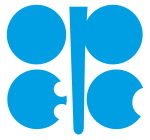
Crude oil prices experienced heightened volatility during 1H25, largely driven by geopolitical developments in the Middle East and Eastern Europe, as well as uncertainty surrounding US trade policy toward key economic partners. These developments weighed on market sentiment and contributed to fluctuating risk premiums across the oil complex. Volatility was further amplified in the oil futures market by elevated speculative activity (Graph 1). Hedge funds and other money managers frequently adjusted their net positions in response to evolving geopolitical news and signals regarding international trade policy, resulting in sharp price swings throughout the period.
Despite the volatility, physical market fundamentals remained robust, with global oil supply and demand broadly balanced. OECD commercial oil stocks stood below the levels recorded during the same period in 2024, as well as the latest five-year average, reflecting sustained inventory drawdowns. Fundamentals showed further signs of strength in June, as refiners ramped up crude intake ahead of the anticipated seasonal increase in transportation fuel consumption during the summer holiday period.
The physical market was supported by firm buying interests for promptloading volumes and resilient refining activities. Signs of progress in US trade negotiations with key counterparts bolstered sentiment surrounding the global economic outlook and demand for oil. In general, key product prices showed a rebound in June, following five consecutive monthly declines. The notable January-to-May product price drop was caused by seasonally softer product consumption during the winter season and positive y-o-y product supply growth due to ramp-ups at newer refineries.
These dynamics led to a lengthening product balance and pressured product prices. During the first five months of the year, however, Atlantic basin gasoline prices were somewhat resistant to general product price weakness. They remained relatively more stable, with limited losses, and also witnessed an early rise that saw gasoline become the highest priced product, particularly in the US. This development was due to the weather related unplanned refinery outages during the first quarter of 2025 and firm gasoline outflows that led to a tighter gasoline balance. This kept gasoline prices relatively well sustained, while those of other key products underwent a downturn. In June, a combination of a rise in crude prices, seasonal improvements in mobility, and a contraction in product availability following the most recent refinery maintenance season led to a rebound in product prices.
This was a reflection of a tighter product balance, increasing road and air travel, stronger power generation demand in East of Suez, and a positive market expectation, particularly for transport fuels. Nonetheless, despite the product price rise observed in June, average product prices remained lower y-o-y, as new product flows continue to enter the market with newer refineries gradually increasing their utilisation rates. In the US Gulf Coast (USGC) and Northwest Europe, this y-o-y decline in product prices was mostly driven by gasoline, jet/kerosene and naphtha, while in Southeast Asia, the largest price drop was seen associated with middle distillates and gasoline.
Average product prices (across the barrel) were down by $11.55/b, $8.98/b, and $10.50/b in the USGC, Rotterdam and Singapore, respectively. Looking ahead, refinery intakes globally, and particularly in the US, are expected to keep throughputs elevated to meet the seasonal uptick in transport fuel demand, especially that of gasoline, jet/kerosene and residual fuel, which are expected to benefit from a seasonal boost in consumption.
Source: OPEC